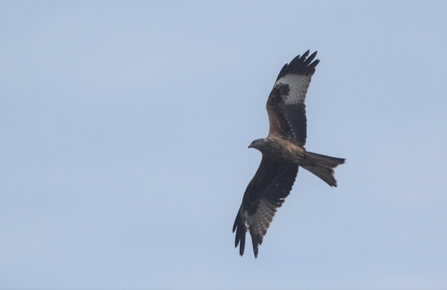Credit Chris Farthing
We had two other new birds for 2021 in November. A woodcock was seen to fly low west across the reservoir on the 9th. This species is seen here around once a year or a bit less, with November being the most likely time (the first full moon in November is sometimes known as the woodcock moon).
On the 8th a female pheasant (above) was seen in the area of cleared reed-bed, and didn’t stay long, but a couple of weeks later presumably the same bird was seen again, and from then on it became very regular, apparently co-existing happily with the local fox population around the woodland trail!

The only other significant highlight in the month was a red kite (above) which was seen on the 4th. This may be the first year that they have been seen more often than buzzards.
The accumulation of mute swans (below) which had started in October continued through November and by the end of the month 22 were present on the reservoir as well as the family of seven on the New River.
Credit Chris Farthing
Other news from wildfowl were the continued high counts of gadwall, peaking at around 80, but shoveler numbers dwindling to low single figures. Teal peaked at six on the 30th. The high water levels meant that both water rail and snipe were again very difficult to see, with most records of the former being heard-only, and a peak count of only three of the latter being seen.
Some warm weather at the end of the month meant some birds were singing, with song thrushes being heard most days for the last week of the month. A mistle thrush was seen on the 23rd, the first for a good few months.
The total number of bird species seen here in November 2021 was 63, higher than average for the last five years and only one behind the best total of 64 in November 2016.

